- April 18, 2025
-
-
Loading

Loading
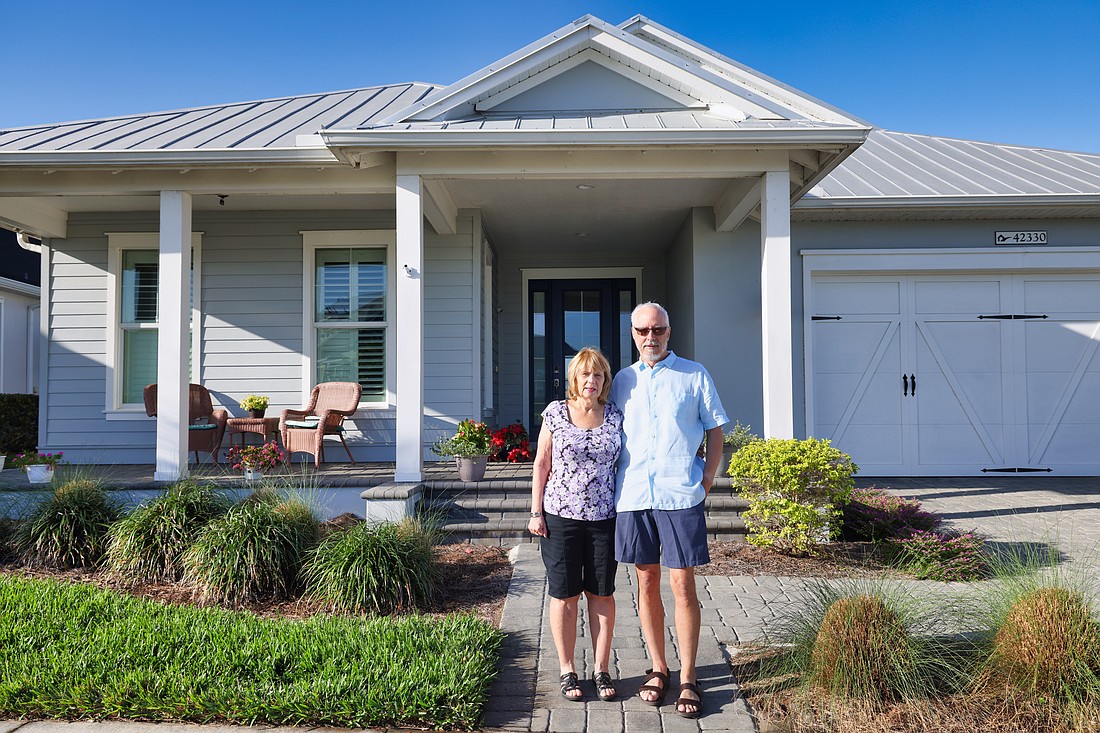
Richard Kinley first heard about Babcock Ranch sometime in 2006 or 2007.
He was working as a technical field engineer in Atlanta for the medical device maker Medtronic at the time. Technology was a big deal for Kinley, he followed what was going on in that world, subscribing to feeds to keep up with the latest advancements and trends. In 2013, he bought a Tesla when most everyone thought you had to be a little crazy to own an electric vehicle.
Babcock Ranch, he had read, was going to be built following environmental principles, a solar-powered town with the most up to date technology aimed at creating a sustainable community. This town would be in the middle of vast farmland somewhere in Southwest Florida.
“I thought, ‘that’s a really interesting idea,’” says Kinley.
That’s all it was, though. An interesting item to be filed away for another day. “I was nowhere near retirement,” he says.
Ten years later, the time came, when Kinley and his wife, Robin, began looking for where to retire in 2016. Robin had grown up in Broward County and, after trying Colorado where she hated the winters, they turned to Florida. Kinley rediscovered Babcock Ranch and went to take a tour of the property, seeing if it would live up to the expectations.
The self-described early adopter and his wife watched the sunset that day, sitting in the dirt of one of the lots they’d liked. The next morning signed the papers.
In January 2017, Richard and Robin Kinley became the first people to buy a home in Babcock Ranch. A year later, they were the first people to move in. To commemorate their pioneering spirit, there is a lake in the development named Lake Kinley.
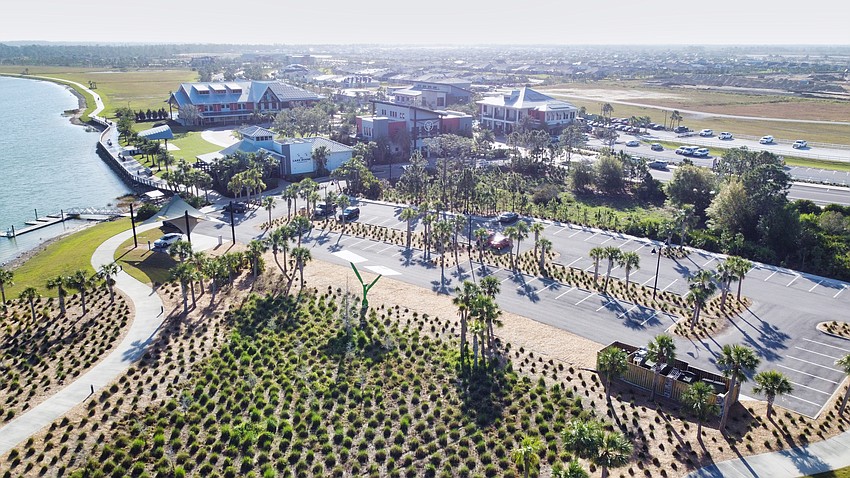
“I just had an intuition about the Tesla and about Babcock Ranch. And I felt very confident,” says Kinley.
“There’s always a difference between what people are told a development is going to look like, be like, and what it actually ends up. But I would say, I've been very pleased that they followed through on the vast number of things that they talked about, that interested us and brought us here.”
The best way to describe the first time you see Babcock Ranch is to say that it pops out at you.
You are driving north on Highway 31, on the edges of Lee and Charlotte counties. Around you are acres and acres of farmland, downtown Fort Myers is about 45 minutes to the Southwest. You feel as if you must be lost, when off on the horizon it just appears. A modern town in the middle of nowhere, as surprising as a baseball diamond in an Iowa cornfield.
Babcock Ranch is a 18,000-acre planned community of energy-efficient homes that is described, without irony or cliché, as a city of the future. It is a sustainable community with an 870-acre solar panel farm powering it and its own water reclamation facility. The community has a school, lakes and a downtown as well as a recently opened shopping center with, this being Florida, a Publix. A 378-unit apartment complex is about to open.
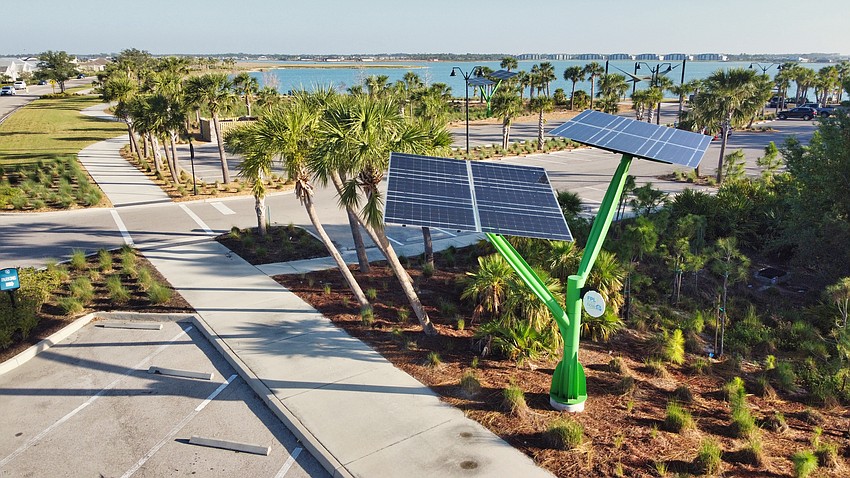
The homes, built by name-brand developers who agree to meet the principles set out by the community’s planners, start in the $200,000 range and go as high as $1.5 million, according to the community's literature. There are smart homes and wiring for electric cars as well as natural gas hookups and metal roofs to cut down on heating cooling costs.
About 5,200 people live in the community as of February. Contracts have been signed on 2,793 homes, 2,095 of them have closed. The plan, obviously, is to continue growing. When complete Babcock Ranch, which plans to one day have its own government and services, is expected to have 19,500 homes and a population of about 50,000 people.
Connecting the entire community are both walking and hiking trails and 1 gigabit high-speed fiber optic internet.
Calling Babcock Ranch a planned community would be accurate, but it would also do a disservice to what the developers are looking to accomplish.
While it does have all the trappings of a planned community, the vision is to create a modern town that is environmentally progressive, on the cutting edge technologically and sustainable all while creating a sense of community and of an old-fashioned hometown.
The place is an environmental utopia that harnesses idealism as it searches for pragmatic solutions and shows that altruism and capitalism can work hand in hand, says Syd Kitson, chairman and CEO of Kitson & Partners, the Florida-based real estate company developing Babcock Ranch.
“You drive by the school during the school day (and) you’re going to see hundreds of bicycles in front of that school,” he says.
“And when the bell goes off at three o’clock, and the kids come out, they all jump on those bikes, and they all spread throughout the town — a group of them is going fishing, some are going to the playground, some are going home — wherever they go, they just spread out all over the town and it is the most wonderful thing to see and witness because that's the kind of place we're trying to create.”
None of this is an accident, of course. But it isn’t just a marketing tool either.
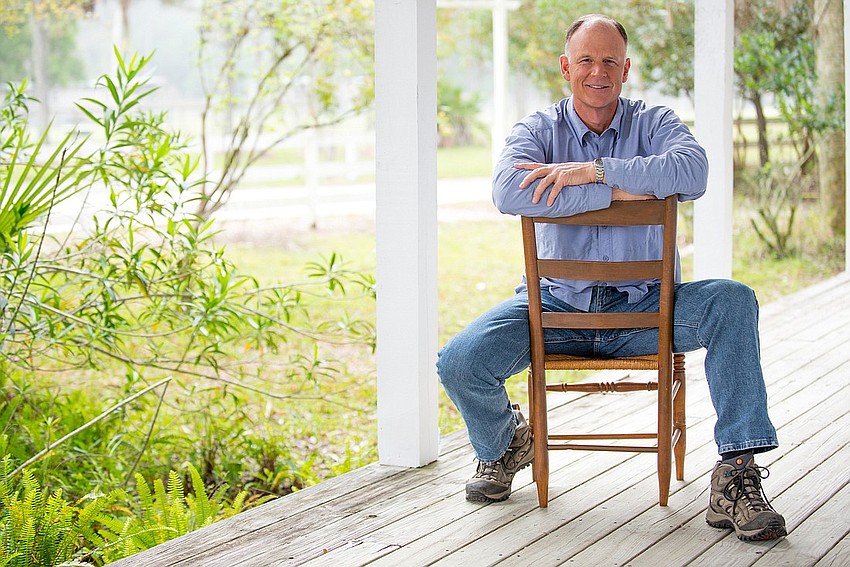
Kitson, the brainchild behind Babcock Ranch, is a self-professed and proud environmentalist who believes you can be successful at business while remaining a environmental steward.
The environmentalism comes naturally to him. A New Jersey native, 64-year-old Kitson was raised hiking and camping in New Hampshire and Vermont, where he developed a love for the outdoors that remains. He attended Wake Forest University and in the early 1980s played guard on the offensive line for four NFL seasons, three with the Green Bay Packers and part of a fourth with the Dallas Cowboys. When his playing career ended, he got into the real estate, founding Palm Beach Gardens-based Kitson & Partners in 1999.
His environmental mission and opportunity came together in 2006.
That’s the year he bought the 91,000-acre Babcock Farms.
Edward Vose Babcock, a Pittsburgh lumber magnate and the city’s mayor from 1918 until 1922, first bought the 91,000-acre piece of land in 1914.
The property, at the time, was known as Crescent B. Ranch and mainly used for agriculture and logging.
Babcock’s son, Fred, took over the ranch in the 1930’s.
According to a history of the Babcock Ranch, Fred was “a great advocate for preserving natural spaces” and worked to bring back depleted forest land on the property. He also rid the property of exotic plant species and came up with creative uses for the land, including setting up alligator and ostrich farming.
He continued to oversee the ranch and maintain a focus on sustainability until he died in 1997 at 83.
Shortly after Fred died, the Babcock Florida Company, the family business, and the state of Florida began discussing the sale of the property. But, after a couple of years, the sides were unable to reach an agreement, according to the family history and published reports from the time.
It wasn’t from a lack of desire.
Florida wanted the property because of its location. It had preserves on either side and was a missing link of sorts in a preservation corridor that ran from the Charlotte Harbor estuary to Lake Okeechobee. The state saw buying the property as an opportunity because of the single ownership and because the family had maintained the land so well over the years even as it was used for business operations.
The holdup was, the family, which now spanned a couple of generations and numbered more than 40, needed to sell the company’s stock to avoid tax penalties and state law only allowed Florida Forever, the state's conservation and recreation lands acquisition program, to buy land.
After the deal fell apart, there were several buyers interested in buying the land, but they mostly wanted to split it up into smaller ranches. The property’s zoning would have allowed it.
But Jack Peeples, the attorney who’d represented the family in the negotiations and a lobbyist, asked for time to find a buyer. Dick Cuda, one of Fred Babcock’s son-in-laws, who was the head of the company at the time, agreed.
The idea was to find someone interested, and possibly crazy enough, to take on the purchase and put it under contract. They would then give that person a year to work out the entitlements and make it economically feasible to keep a portion and sell the vast majority of the land to the state.
That’s when Kitson came into the deal.
This was 2005. Kitson and his partners had been looking to do a greenfield project. To this point, they’d been involved in environmentally friendly development but had specialized in turning around failing development projects and finishing them. They wanted to tackle something from the start that did not involve fixing other people’s problems.
Kitson spoke to Peeples and took a look at what the family had to offer. The land was beautiful, but the project was too big and the time too short.
What happened next is best summed up in how an observer described the pairing of Peeples and Kitson: “It was basically a man who didn’t take no for an answer and a man who had a hard time saying no.”
An agreement was reached in July 2005.
On July 31, 2006, Kitson & Partners reportedly paid $700 million for the 91,000 acres (a company spokesperson could not confirm the amount though it has never been publicly disputed). Morgan Stanley's real estate funds backed the deal, the Business Observer reported in 2016. Evergreen Real Estate Partners, the real estate investment arm of Chicago-based M3 Capital, also supported Kitson & Partners in the early going.
On that same day, meanwhile, Kitson sold 73,000 acres to the state of Florida for $351 million; $41.5 million of that came from Lee County.
Today, nearly 16 years after closing the deal and going to work on creating Babcock Ranch, Kitson says he knew from the start it would work.
“Yes, we did envision this, this new town,” he says. “And it’s rare in life when something turns out to be even better than you had hoped. And I think Babcock Ranch, with the vision that we had from day one, it is what we thought it would be and more.”
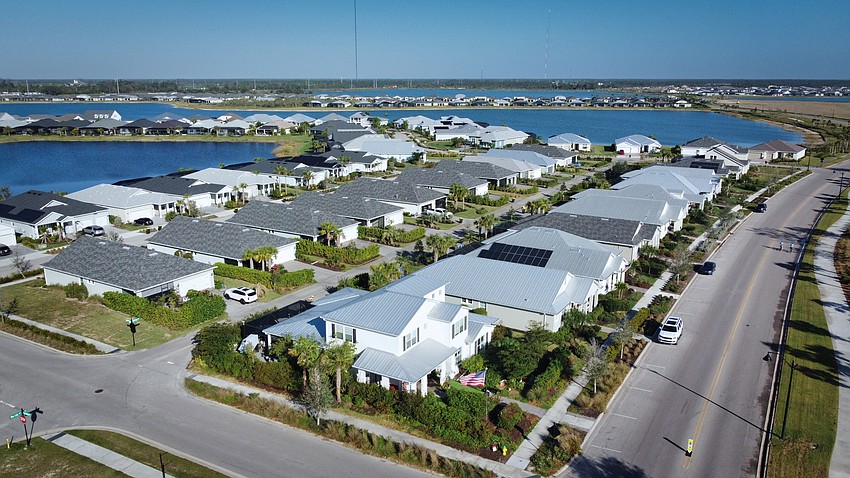
That vision got tested in September when Hurricane Ian hit Southwest Florida and moved inland. The storm, with about 150 mph winds, stood over Babcock Ranch for eight hours.
A few days before Ian hit, while it was still projected to hit farther north in Tampa, engineers came out to check and double everything that systems developed were operational.
The developers, in an attempt to keep the community safe from powerful storms and to make the community more resilient had created a water management system that follows natural and historic drainage flows and buried power cables. It was built on 25-foot and higher elevations and required all structures be built to withstand up to 145 mile per hour winds.
Kitson rode Ian out in his Babcock Ranch home.
He preferred the word hopeful rather than confident when asked how he felt about how the community would hold up. You never know what Mother Nature is capable of, he says.
As Ian passed over, Kitson was left to worrying about the people who’d put their trust in his vision. Would the infrastructure hold up? Would the power go out? Would the homes sustain the punishing winds?
What happened was nothing. There were no outages and there was no significant damage.
In this case, nothing was something major. The plans had worked and, again, embracing technology and environmental principles had proved a worthwhile endeavor and investment.
“That was the test for Babcock Ranch,” Kitson says.
“That was the test all the things that we worked on. All the things that we had done for years and years and years preparing for this. You never really think it's going to happen, and you hope it's not going to happen. But it happened in a big way and Babcock Ranch passed the test. Which proves that you can create a resilient community, you can do it the right way. And it certainly worked.”